The Column of Constantine (Turkish name: Çemberlitaş Sütunu) is a Roman triumphal column in Istanbul, dating from 328 and located on the Chamberlitaş Meydanı Square in the Fatih district.
Because of its history and appearance, the column is also known as the "Burnt Column", "Burnt Column" and "Belted Column".
The restored column of Constantine is placed on a pedestal, now has a height of 34.8 meters and is surrounded by metal brackets.
The column is located on the site of the former Roman forum of Constantine, from which only this column now remains and whose place today is occupied by Chamberlitash Square, which is much smaller than it.
The Column of Constantine, together with other historical monuments of Istanbul, is included in the UNESCO World Heritage List.
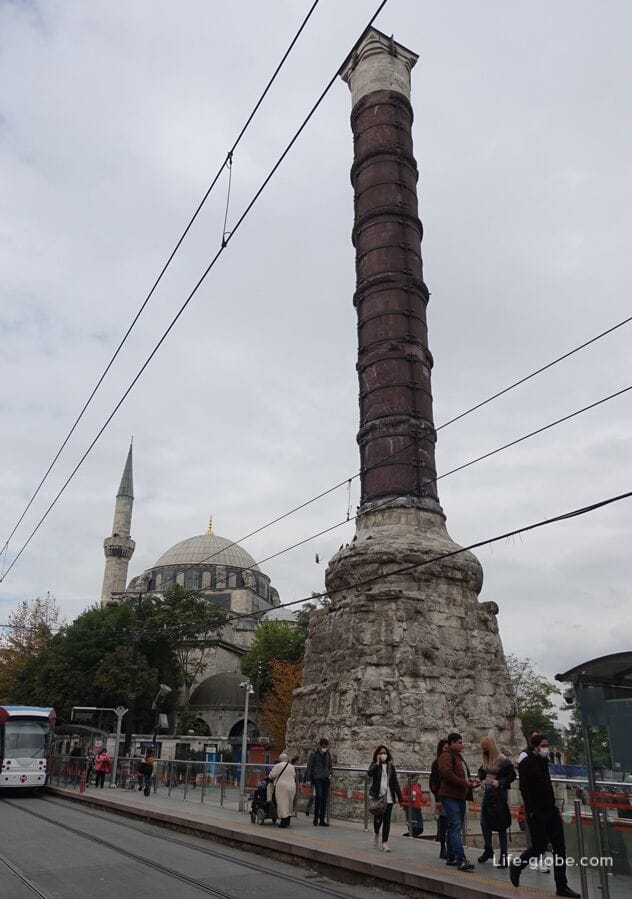
The column was built in 328 by Emperor Constantine I the Great, who founded the new capital of the Roman Empire on the site of ancient Byzantium (hereinafter referred to as Constantinople, and now Istanbul).
The column was installed on the III hill of Constantinople, and was supposed to remind of Rome standing on seven hills, as well as symbolize the connection of the old capital of the empire with the "New Rome".
The grand opening of the column took place on May 11, 330.
At the time of construction, the column had a height of 50 meters and was built of several cylindrical porphyry blocks, and the top of the column was decorated with a statue of Constantine in the image of Apollo.
The Byzantine Emperor Manuel I Komnenos (1143-1180 years of rule), already by that time on the damaged column, placed a cross in place of the original statue of Constantine and added a commemorative inscription that read: "Faithful Manuel has revived this holy work of art, which has been damaged by time."
After the fall of Constantinople in 1453, the cross was removed from the column by the Ottoman Turks.
Earthquakes and a fire in 1779 destroyed the adjacent surroundings of the column, and left black marks on the column itself, after which the column was named "Burnt Column" or "Burnt Column". The column was restored by Abdulhamid I, who added an existing stone base to the column, and the original platform of the column is located 2.5 meters underground.
Today, the Column of Constantine is one of the most important examples of Roman art in Istanbul.
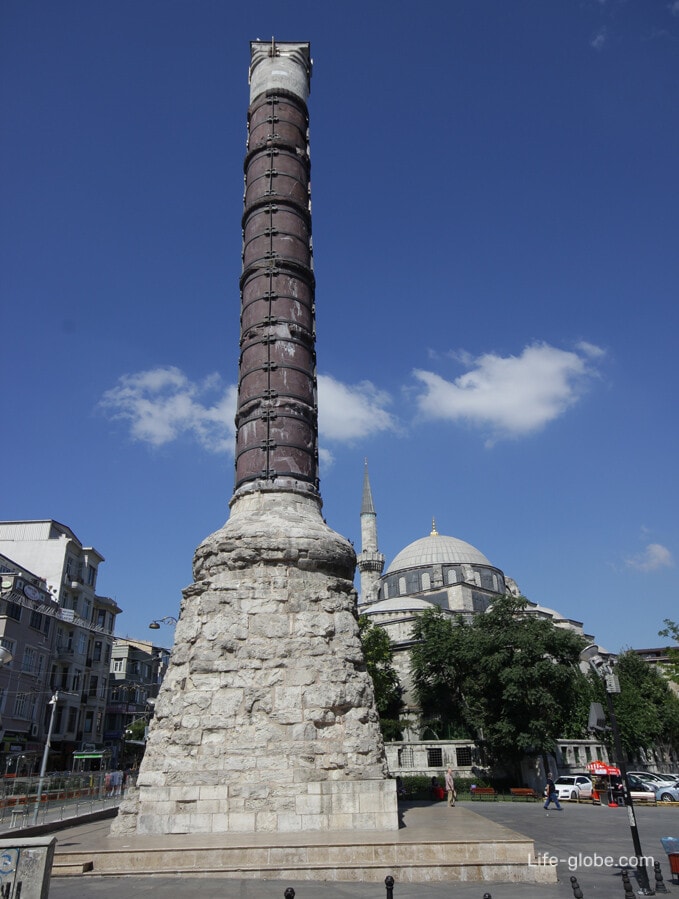
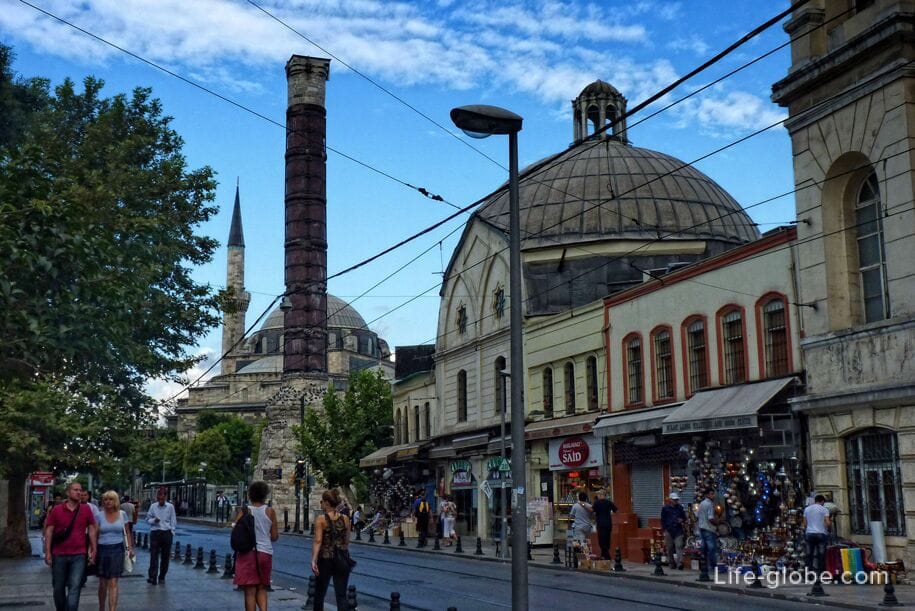
Near the column of Constantine there are such sights of Istanbul as,
- Historical Turkish bath - Chamberlitash Hamami (Çemberlitaş Hamamı), originally built by Mimar Sinan in 1584 and commissioned by Nurban Sultan, head of the Imperial harem of Istanbul after the death of her second husband Selim II. Learn more about Chamberlitash Hammam with a website and description...

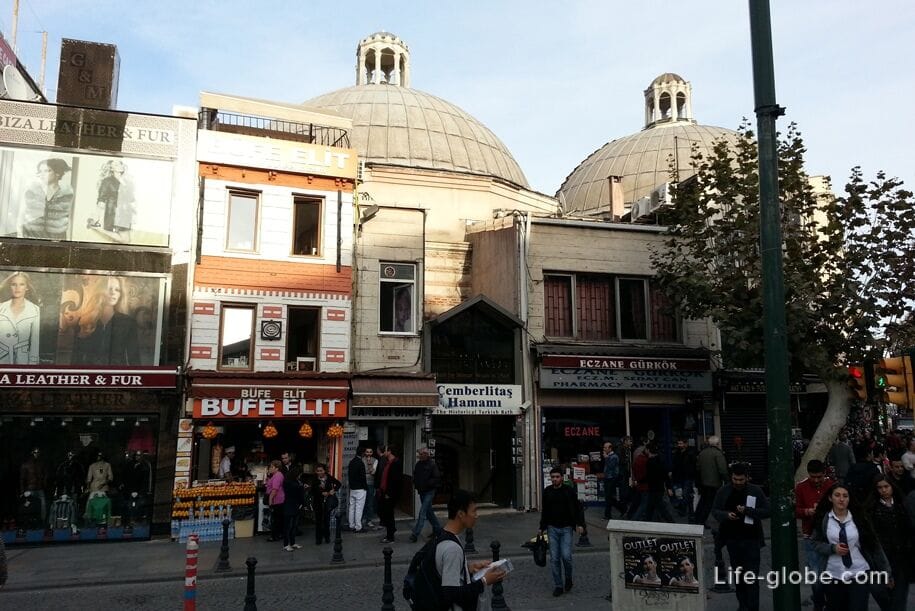
- Gazi Atik Ali Pasha Mosque (Gazi Atik Ali Paşa Camii);
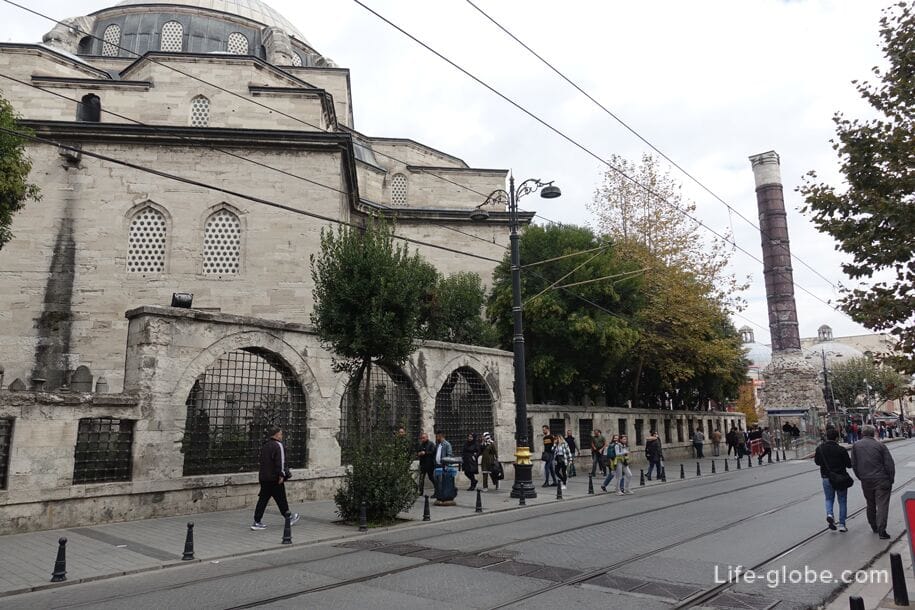
- Press Museum of the Turkish Journalists' Association (Türkiye Gazeteciler Cemiyeti Basın Müzesi);
- mausoleum of Mahmud II with a cemetery (Sultan II Mahmut Türbesi) - a family tomb of the Ottoman sultans, near which there is a cemetery with the graves of famous Ottoman politicians and writers. More about the mausoleum of Mahmud II with a cemetery...

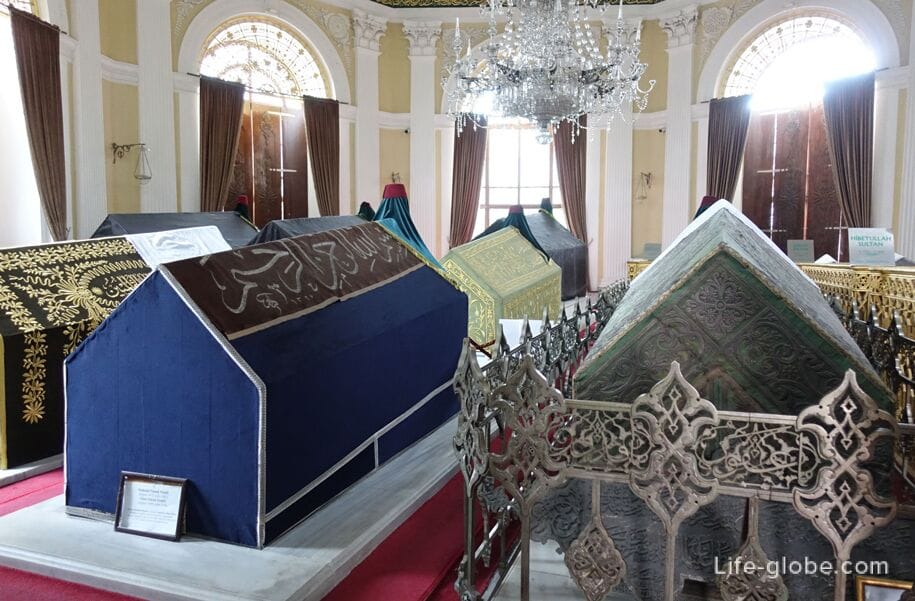
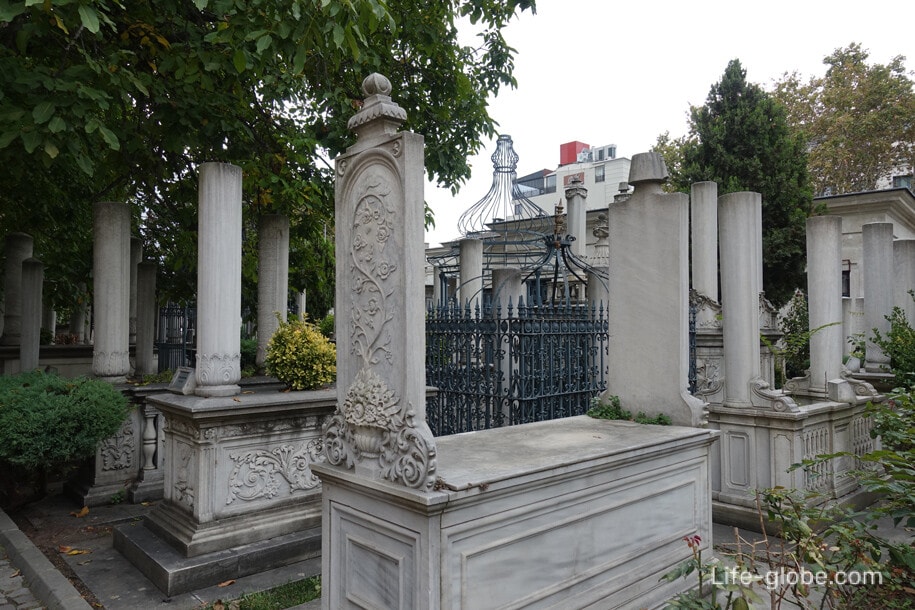
Address of the column of Constantine: Mollafenari, Vezirhan Cd. No:16 D:18, 34120 Fatih/Istanbul, Turkey.
All accommodation facilities in Istanbul, including in the historical center, on the European and Asian sides of the city, can be viewed and booked here








